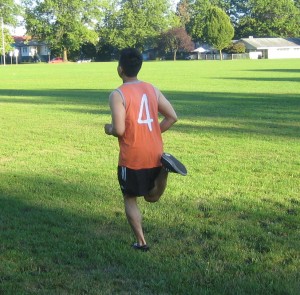After the long winter season, many individuals look forward to spend some time outdoors under the warmth of the summer sun. On the other hand, prolonged exposure to high temperatures and humidity or engaging in strenuous activities during hot weather can lead to life-threatening heat-related illnesses. Just like with exposure to cold weather, young children and the elderly face the highest risk. The common heat-related illnesses include heat exhaustion and heat stroke.
What is heat stroke?
Heat stroke occurs once the body loses its ability to control its internal temperature. The sweating mechanism eventually shuts down while the body temperature rises rapidly as high as 106 degrees F.
Symptoms of heat stroke

- Elevated body temperature
- Headache
- Hot skin with lack of sweating
- Dizziness
- Rapid pulse rate
- Nausea
- Confusion
- Loss of consciousness
Remember that heat stroke is a medical emergency that entails emergency care while performing measures to cool down the individual. These measures include moving the individual to a shaded area and reducing the body temperature with cool water by using a sponge, damp towels or sheets. You have to monitor the temperature of the individual until the emergency team arrives. If the individual is nauseous, vomiting or unconscious, do not try to provide fluids.
What is heat exhaustion?
Heat exhaustion is a mild form of heat-related illness that can occur under hot weather. This develops at a slower rate and can occur after several days of continuous exposure to hot weather and lack of fluid replacement.
Symptoms of heat exhaustion
- Profuse sweating
- Weakness
- Headache
- Dizziness
- Fatigue
- Nausea or vomiting
- Muscle cramping
If heat exhaustion is not treated, it can progress to heat stroke. Once the symptoms are severe or the individual has a current heart issue, medical care is required while providing measures to cool him/her down. You have to cool the body by providing non-alcoholic beverages. In case the symptoms persist for more than an hour, it is best to seek medical care. By enrolling in a course on first aid, you can readily manage the symptoms.
Safety precautions under hot weather
Take note that heat-related illnesses such as heat exhaustion or heat stroke can be prevented. There are several measures that you should take into consideration to avoid these conditions.
- Check the weather forecast for heat advisories. It is best to stay indoors preferably with air conditioning when the temperature is at its highest. Those who are older than 65 years old face the highest risk for heat-related illnesses.
- It is advisable to dress appropriately for the hot weather with light-colored, lightweight and loose clothing. Make sure that most of the skin is covered with proper clothing and use a hat or umbrella for added protection. Do not forget to apply a sunscreen with SPF of at least 15 and continue to apply based on the instructions.
- If possible, engage in strenuous outdoor activities during the cool morning hours.
- Stick with lighter meals since heavy meals can boost the core body temperature.
- Increase the intake of fluids even if inactive. For those who are active, it is important to consume 2-4 glasses of water every hour. When sweating occurs, it is recommended to consume sports beverages to replace the lost salt and minerals.
- Be familiar with the symptoms of heat exhaustion and heat stroke. Early recognition of the symptoms can greatly help in delivering the appropriate first aid measures.
